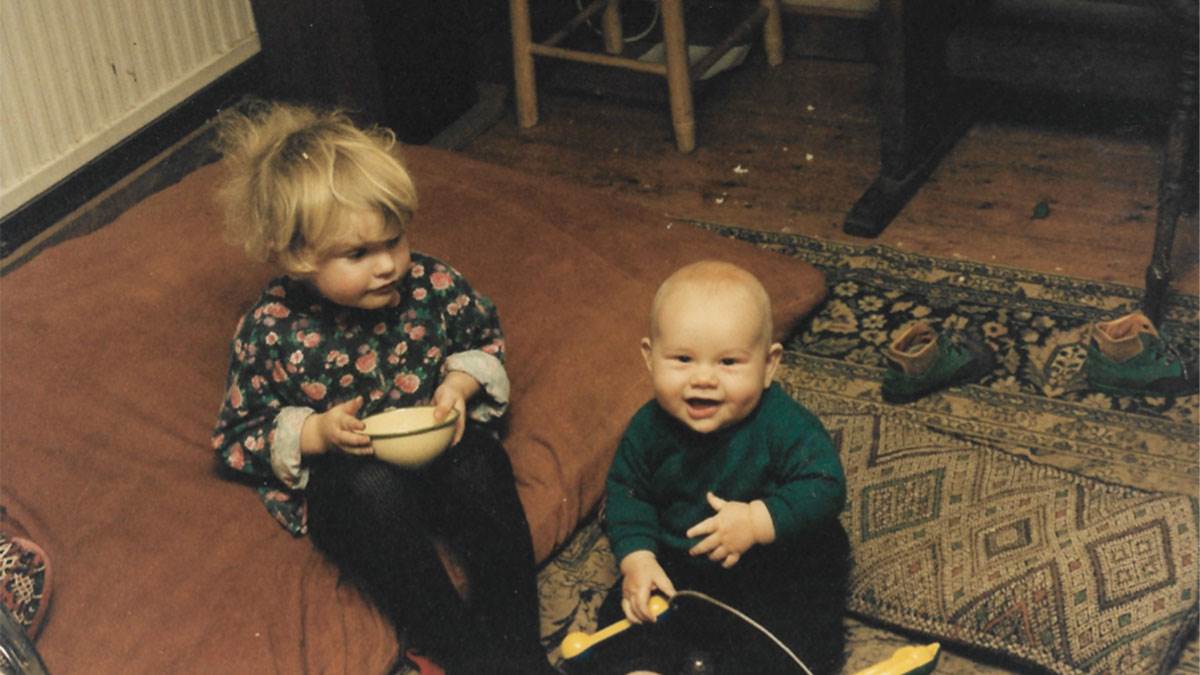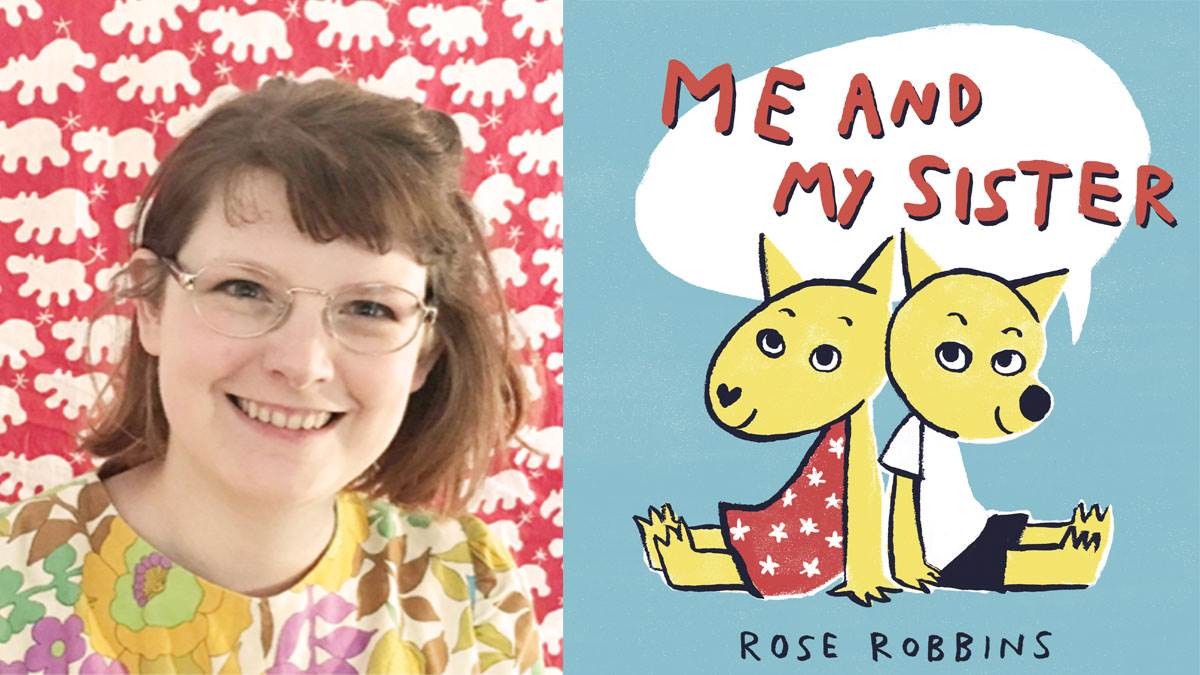Rose Robbins: 'Books like this can comfort young carers'
Published on: 1 Ebrill 2019 Author: Rose Robbins
Rose Robbins is the author behind Me and My Sister: a picture book about two loving but bickering siblings. Although it's a relatable read for every brother and sister, she explains that it was also inspired by her disabled brother – and why it's so important that experiences like hers are heard.

Rose Robbins and her brother in the 1990s
In 2017, I trained as a facilitator of peer support groups for adult siblings (with the charity Sibs). Although I grew up with a disabled sibling myself, these meetings were the first experiences I had of meeting other people who had the same experiences growing up as I did..
It felt like I could at last talk about everything, the highs and the lows of the sibling experience, knowing that I would be heard and understood completely. It was the stories my fellow group members – and their strength – that inspired me to start writing about my own experience.
I felt validated, and I was better prepared to support and advocate for my autistic brother.
Personal story about embracing difference
I got in touch with the wonderful Sarah Pakenham (who has since formed Scallywag Press!) to show her my portfolio of work. Sarah was immediately taken with my personal story of two siblings, even though it was barely a few sketches. I was pretty flabbergasted. We began working together alongside my marvellous editor Janice Thompson and art director Sarah Finan to create the book as it is seen today.
So Me and My Sister started to take shape, not as an exact reflection of my experience, but one that I hoped might resonate with children who have a disabled sibling, and one that will inspire an empathy and understanding in those who don’t share that experience.
 Rose Robbins, left, with her picture book Me and My Sister
Rose Robbins, left, with her picture book Me and My Sister
Me and My Sister is a story about growing up learning to embrace difference. It’s about celebrating the much overlooked role of siblings in the growth and relationships of disabled children.
Learning from each other
In my book, the brother and sister in the story care about each other a lot, but they don’t do everything in the same way and they have had to learn to adapt to this.
For example, the sister does not necessarily respect the brother’s privacy! I’m sure many non-autistic sisters are the same! We see her bursting into the brother’s room in the first spread. Siblings of disabled children have to learn patience early and often guard their possessions more closely than other children for this reason. The brother is not the only one who has had to adapt, of course. The sister does not naturally seek out physical affection, but she has learnt to enjoy sharing a high-five with her brother in lieu of a hug.
I would like to point out that this duo are not representative of every autistic sibling and non-autistic sibling pair. All children vary, as anyone with experience will know!
A discovery about myself
After finishing Me and My Sister, I began wondering about my own neurological make-up – something I had been curious about my whole life (isn’t everyone?).
After an initial consultation with my GP and a further seven months of waiting, interviews, questions and tests, I received a diagnosis of autism. At the time I was already working on a follow up book to Me and My Sister, written from the perspective of the autistic character, so this felt very natural.
Around this time, I also became an ambassador for inclusion with Inclusive Minds, a non-profit organisation that seeks to improve the quality of representation in children's literature. I was soon taking part in a panel at London Book Fair alongside Ade Adepitan, Cerrie Burnell and Jay Hulme, all incredible writers and speakers, talking about the importance of incidental inclusion in the future of children's literature. I was absolutely bursting with joy and terror at the same time! It was quite an experience for a newly diagnosed autistic, but I loved it.
What I hope my book will achieve
Now that I am releasing my book into the wild, I hope that it can reach all types of children.
I hope that brothers and sisters can read it together, and that it will bring families closer. I hope it will spark conversation.
Books like this are needed because they can bring comfort to young carers, and also young siblings who have less of a role in their sibling's care. Above all else, I hope it is a fun book to read again and again.
See recommended children's books about being on the autistic spectrum
Topics: Bookmark, Disability, Autistic spectrum conditions, Siblings, Features






Add a comment